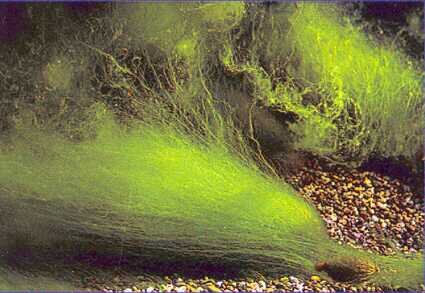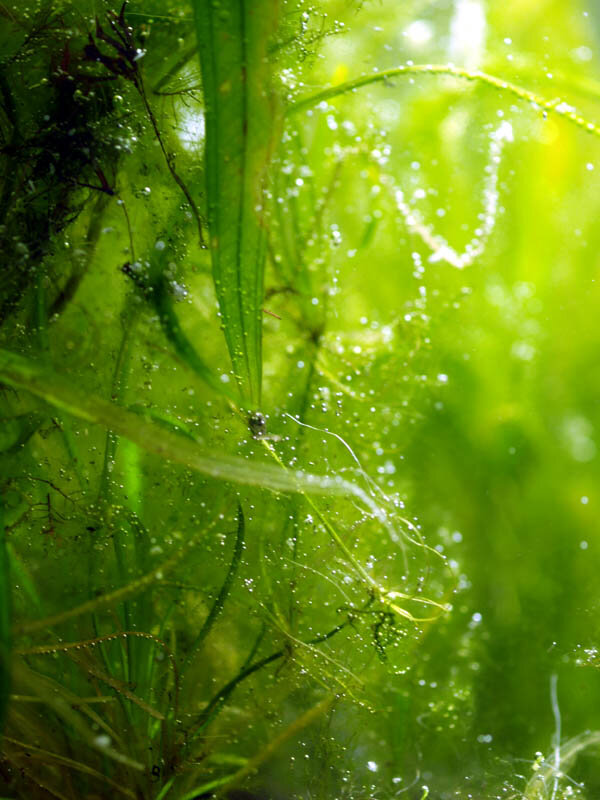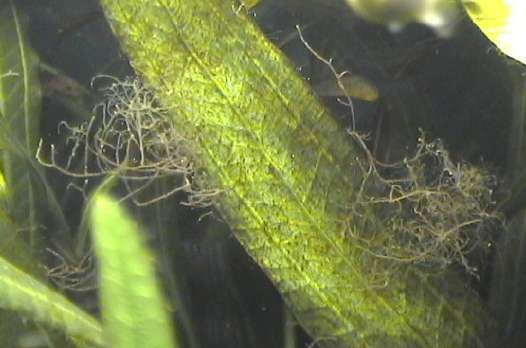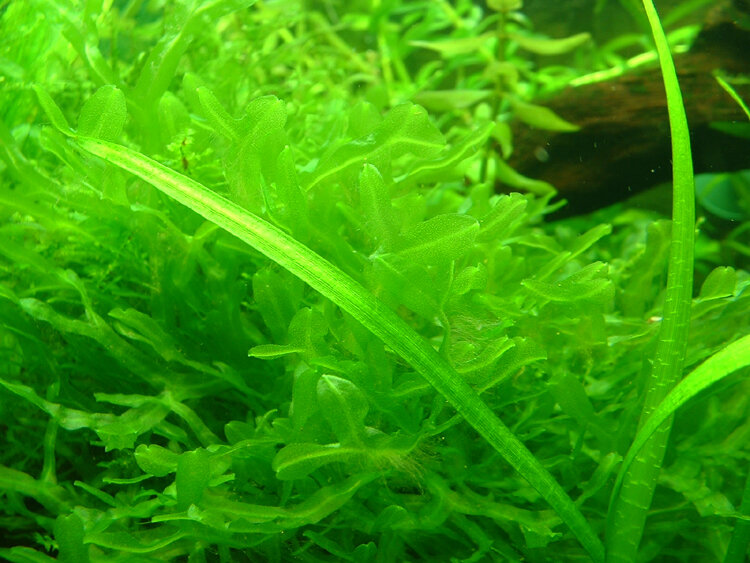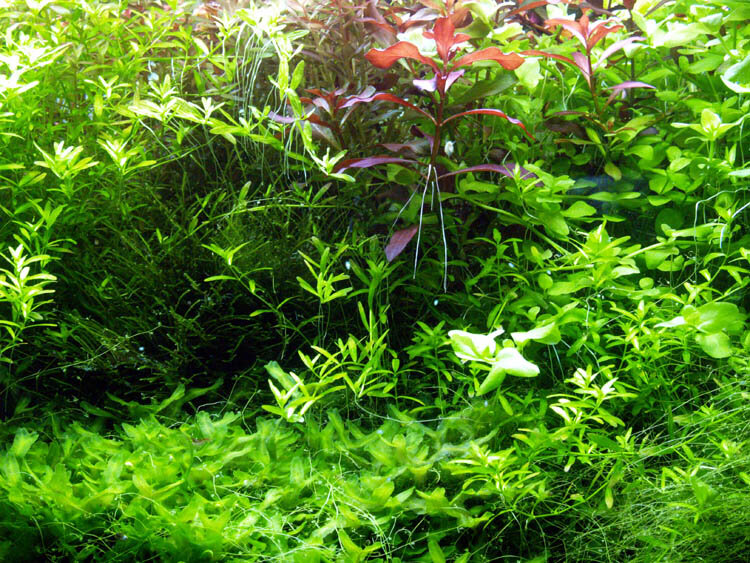If the water values of such aquaria are measured more precisely, iron deficiency (Fe = 0 mg/l or only detectable in traces), an excess of phosphate (values of 3-5 mg/l are not uncommon) and sometimes (if water changes are neglected) an excess of nitrate (values of up to a multiple of 50 mg/l occur) are very often found.
However, the diagnosis that is often quickly made, i.e. that there is an excess of phosphate and nitrate in the aquarium, is incorrect, as the cause of plant growth problems is more likely to be a lack of iron and, in a broader sense, trace elements, which prevents the "higher" aquatic plants from effectively processing the phosphate and nitrate. Sometimes you hear recommendations such as less lighting in the aquarium or replacing the fluorescent tubes, but these are not correct in terms of content. Without a solution to the problem of supplying the aquatic plants, the aquarist will not achieve a solution to problems with undesirable algae growth or poor growth of aquatic plants.
If you start to change the water regularly and to a greater extent (30% per week) and add iron and trace elements, you will notice after a few weeks that the aquatic plants look more vigorous again and that the algae no longer multiply and spread so quickly. From this point onwards, you can start replanting (or replanting if necessary) some very vigorous species (usually stem plants such as waterweed, hair vetch, Indian water star, etc.). These effectively break down phosphates and nitrates and thus bring the aquarium back into balance. In the second phase, slow-growing species such as some water cups (Cryptocoryne spec.) or Amazonian sword plants (Echinodorus spec.) can also be successfully replanted.

